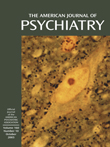The “Dreamy State”: John Hughlings-Jackson’s Ideas of Epilepsy and Consciousness
Abstract
OBJECTIVE: The authors review John Hughlings-Jackson’s writings on the “dreamy state” and his subsequent derivation of degrees of consciousness. METHOD: They reviewed the publications of Hughlings-Jackson from his initial description of the “dreamy state” in 1876 until his writing about the “uncinate group of fits” in 1899. They then examined Hughlings-Jackson’s use of the associated signs and symptoms of the “dreamy state” to formulate his ideas about human consciousness. RESULTS: Hughlings-Jackson defined the “dreamy state” as “over-consciousness,” or a heightened intellectual state. He described associated symptoms of “crude sensations” of smell and taste, an unusual epigastric sensation, chewing and lip smacking, automatisms, postictal symptoms, and at least some degree of alteration of consciousness. Using his observations of the “dreamy state” as a model, Hughlings-Jackson proposed three degrees of consciousness, each with an object and subject component. CONCLUSIONS: Through his description of the “dreamy state,” Hughlings-Jackson accurately characterized and localized medial temporal epilepsy. Correlating the ictal semiology of the “dreamy state” with consciousness, he developed a theory of consciousness that remains relevant to current understanding of the mind-brain relationship.



